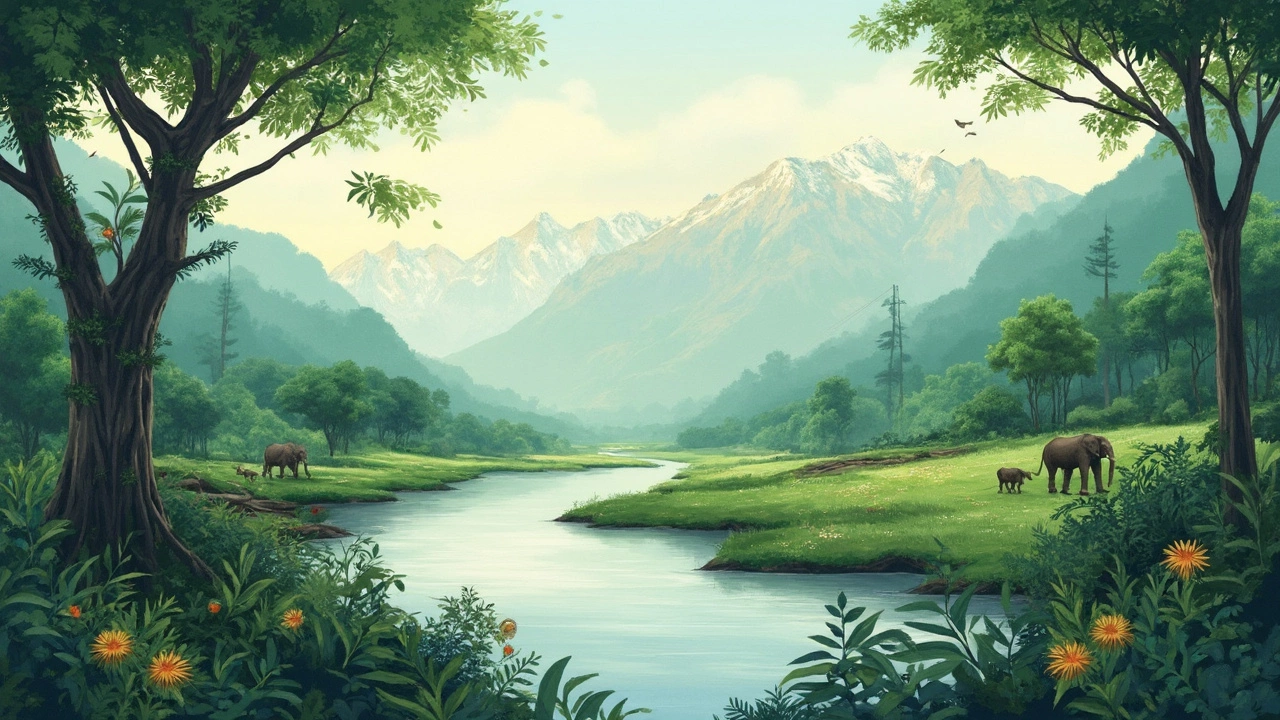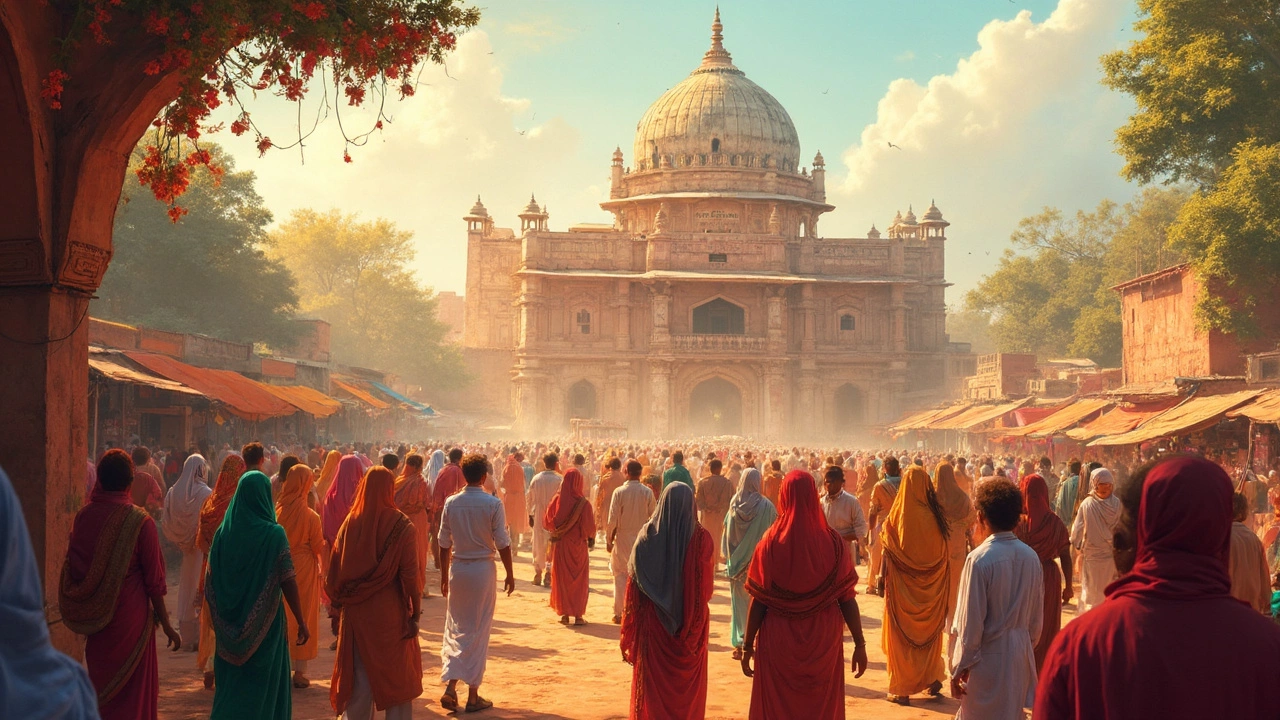Ever wondered how many kinds of environments surround us every day? It's more than just forest vs. city. Let’s break it down. There are five primary types of environments: natural, built, social, cultural, and hybrid. Each one plays a unique role in shaping our world and, honestly, our day-to-day lives too.
Natural environments are those gorgeous untouched places like forests, mountains, and oceans. They're critical for biodiversity, providing habitats and sustaining countless ecosystems. Ever been on a hike and felt the world fade away? That's the magic of natural environments at work.
The second type is built environments, which include cities, roads, and any place humans have significantly altered. Think skyscrapers, highways, and urban parks—these are all part of the built environment. They showcase our capacity to transform space to suit our needs but also remind us of our impact on natural landscapes.
- Natural Environments
- Built Environments
- Social Environments
- Cultural Environments
- Hybrid Environments
Natural Environments
When we talk about natural environments, we're diving into the wild world of places not heavily altered by human activity. These are your jungles, rivers, deserts, and oceans—where Mother Nature calls the shots. Living in a fast-paced world, natural environments offer a break from the hustle and bustle, giving us a slice of tranquility.
The Importance of Biodiversity
These places are incredibly important because they're home to an incredible amount of biodiversity. Did you know rainforests, which cover only about 6% of Earth's surface, are home to over half of the world's plant and animal species? That's a remarkable amount of life packed into one type of environment.
Ecological Services
Natural environments provide what scientists call 'ecosystem services'. They're like nature's free benefits to us. Think of clean water, fresh air, pollination of plants, and even climate regulation. Forests and oceans are major carbon sinks, meaning they absorb a lot of the CO2 we pump into the air. Without them, climate change would be way worse.
Threats to Natural Environments
Unfortunately, these environments face threats from things like deforestation, pollution, and climate change. A recent study highlighted that we lose about 18 million acres of forest every year. That's about the size of Panama disappearing annually. It's critical to invest in conservation and sustainable practices to protect these areas.
Tips to Help Preserve Natural Environments
- Support conservation movements working to protect these areas.
- Reduce, reuse, and recycle to minimize waste and pollution.
- Practice sustainable travel, like visiting eco-friendly destinations.
- Get involved locally—plant trees and clean up natural habitats near you.
By appreciating and preserving natural environments, we ensure they continue to thrive and support life on Earth, including our own.
Built Environments
Built environments are all those places we've shaped to fit our needs—think about your home, office, or even that favorite coffee shop down the street. It's basically where human creativity meets practicality, resulting in the structures and spaces we navigate daily.
The Urban Jungle
Take cities as an example—they're at the heart of what built environments are all about. Urban areas are designed to support large populations and a diverse range of activities. Did you know that by 2050, over 70% of the global population is expected to live in cities? That's some serious urban planning at work!
Cities are all about maximizing space and efficiency. From the high-rises of New York City to the sprawling roads of Los Angeles, every element is planned to meet logistics, aesthetics, and, don't forget, sustainability.
Impact on Nature
Now, let's not ignore that built environments often come with a footprint. They significantly alter landscapes and can sometimes disrupt ecosystems. That bustling highway might make your morning commute faster, but it's important to remember its environmental impact.
In response, more cities are incorporating green spaces, like parks and urban gardens, to offset some of these effects. It's a way to bring a bit of nature into these heavily constructed areas—because who doesn't love a tree-lined street to stroll on?
Smart Development
Modern built environments are getting smarter too. Smart technologies in cities help manage traffic flow, reduce energy consumption, and even improve public transport systems. They're not just futuristic bells and whistles; these technologies are key to making our cities more sustainable and livable.
| City | Smart Initiatives |
|---|---|
| Barcelona | Smart water meters, lighting |
| Singapore | Integrated city management system |
| Amsterdam | Smart mobility, energy management |
In a nutshell, built environments are about finding balance. As they continue to evolve, they teach us how to create spaces that serve us well while still coexisting with the natural environments.

Social Environments
Social environments are where humans interact and form relationships and communities. These environments are crucial because they shape everything from our mental well-being to our cultural norms. The atmosphere in which we are brought up or spend the majority of our time contributes significantly to our behavior, attitudes, and perceptions.
The Role of Social Environments
Imagine living in a neighborhood where everyone knows each other. You might have block parties, borrow sugar from your neighbor, and even watch each other's kids—this is a prime example of a strong social environment. These interactions foster a sense of belonging and community that impacts your personal growth and happiness.
On the flip side, if the social environment is more isolated and people don't communicate often, it might lead to feelings of loneliness or detachment. It's super important for people to feel connected for a healthy mental state. That's why building a safe and supportive social environment should be a priority.
Social Environments and Health
There's some interesting data showing that social ties can impact not just mental health but physical health too. Studies have shown that people with robust social networks tend to live longer and healthier lives than those without. So it’s not just about feeling good—being engaged in a vibrant social community actually contributes to longevity!
Ever notice how environments at work can vary hugely? A positive social environment at work—like open communication, mutual respect, and support—can boost job satisfaction and productivity. Conversely, a negative social environment might lead to stress and burnout.
- Encouraging open dialogue can help improve social environments.
- Organizing community-building activities can strengthen social ties.
- Facilitating support groups may enhance individual well-being.
Building a strong social environment isn't just about making life more enjoyable. It’s about enhancing quality of life on multiple levels. Whether it's at home, in your community, or even online, fostering positive social connections can make a huge difference.
Cultural Environments
Cultural environments are all about the human side of things, you know? They encompass the values, beliefs, practices, and artifacts that define our way of life. These environments include everything from language, religion, and traditions to arts and institutions. They're the lens through which humans interpret the world and each other.
One interesting fact is that cultural environments can vastly differ even within the same types of environments. Take the US, for example. The cultural environment in New York City, buzzing with diversity and a fast-paced lifestyle, contrasts sharply with the laid-back, surf-centric culture of a small town in California.
Blending Traditions
Cultural environments also highlight how traditions evolve when different groups come together. Think about fusion cuisine or music genres like jazz—these emerged from the blending of diverse cultural backgrounds. That's the beauty of a cultural environment; it's where new traditions are born.
Impact of Globalization
These days, globalization is shaking up cultural environments. While it's introducing us to new ideas and practices, it's also raising concerns about losing local cultures. A balance is important to ensure that cultural environments don't lose the distinctiveness that makes them special.
Feeling connected to one's cultural environment is crucial. It helps people define their identity and find a sense of belonging. Amazing, right? Understanding these environments can give us insights into the diversity that shapes our world, encouraging appreciation and respect for different ways of life.

Hybrid Environments
Hybrid environments are a fascinating blend of natural and built environments. These areas mix elements from both to create spaces that are functional but also friendly to the ecosystem. Picture green roofs on urban buildings or community gardens nestled in busy neighborhoods. They unite the benefits of both worlds—providing functionality while promoting biodiversity.
One popular example of hybrid environments is eco-parks. These spaces integrate sustainable design principles with natural landscapes. In Singapore, the Gardens by the Bay showcases state-of-the-art engineering alongside stunning plant collections, offering a perfect model of a hybrid environment. Not just beautiful, they serve educational purposes and demonstrate how human ingenuity can work harmoniously with nature.
Importance of Hybrid Environments
The real power of hybrid environments lies in their potential to support sustainability and health. By fusing built structures with nature, they can improve urban air quality and reduce heat. If you're tired of using air conditioning a lot, think green facades—buildings covered in greenery naturally cool down.
Hybrid environments can also serve as great social spaces. You've probably experienced how relaxing it is to hang out in a park that's surrounded by city life. They encourage community interactions and promote wellbeing through accessibility to green areas.
Another interesting aspect of hybrid environments is their role in urban agriculture. Rooftop farms are popping up worldwide, offering a sustainable approach to food production. By utilizing unused urban spaces, they bring fresh produce to cities, cut transportation emissions, and foster a closer relationship with our food sources.
Hybrid Environments: The Future
As our world becomes more urbanized, the importance of hybrid environments will only increase. They hold the key to making cities more livable and eco-friendly. So, the next time you stroll through a park or pass a green wall, think of them not just as aesthetic features but as crucial contributors to a healthier planet.
Are you living in an area that could benefit from a hybrid approach? Perhaps starting a local garden or advocating for more green public spaces might be a step toward a more balanced environment.
